Navigating the complexities of sea freight shipping from China to the Netherlands can be a daunting task for many businesses. However, with the right knowledge and resources, it can also be a cost-effective and efficient solution for transporting goods across vast distances. As one of Europe’s key trading hubs, the Netherlands welcomes a significant volume of imports from China, primarily through its major ports like Rotterdam and Amsterdam. In this guide, we will explore the advantages of sea freight, key considerations for shipping, major ports involved, and essential insights into shipping times and costs. Whether you’re a seasoned importer or new to international trade, understanding these elements is crucial to optimizing your logistics strategy.
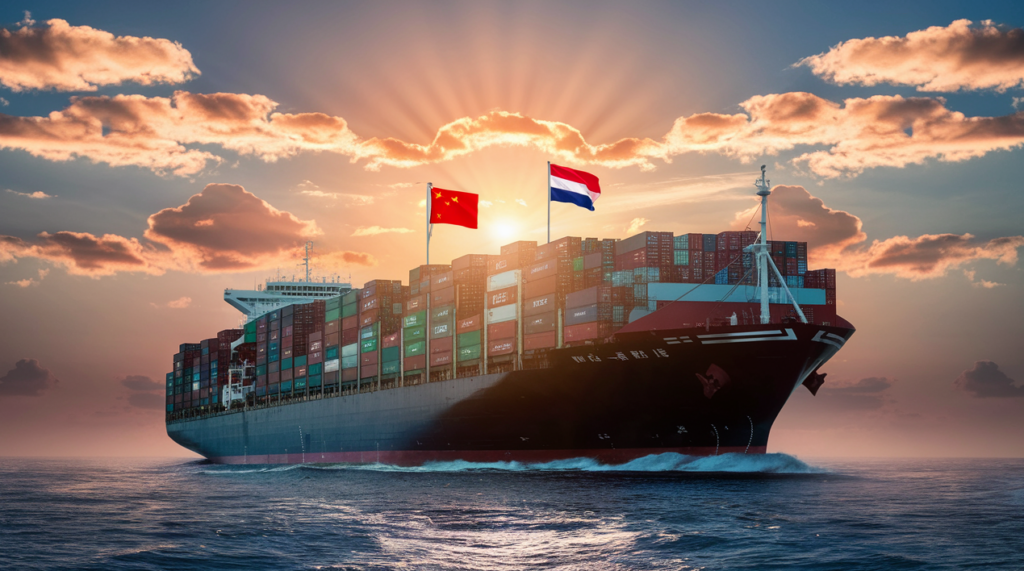
Introduction to Sea Freight from China to the Netherlands
The shipping landscape between China and the Netherlands is characterized by a robust and dynamic flow of goods, primarily facilitated through sea freight. As one of the largest trading partners of China in Europe, the Netherlands serves as a crucial entry point for a vast array of products ranging from electronics to textiles. The strategic location of the Netherlands, with its efficient ports such as Rotterdam—Europe’s busiest port—enhances its significance in international trade.
Sea freight plays an indispensable role in global shipping logistics due to its ability to transport large volumes of goods over considerable distances at a relatively low cost. This mode of transportation is essential for many businesses looking to optimize their supply chain while maintaining profitability. In this guide, we aim to demystify the process of sea freight from China to the Netherlands, highlighting its advantages and providing insights into how to make the most of this shipping option.
Advantages of Choosing Sea Freight
Cost-effectiveness of Sea Freight
When assessing shipping options, cost is typically a primary concern for businesses. Sea freight is often more economical than alternatives such as air freight due to several factors:
- Lower Freight Rates: The cost per unit for sea freight is significantly lower than that of air freight, particularly for large shipments.
- Bulk Shipping: The ability to consolidate shipments maximizes space and minimizes overall costs.
- Fewer Additional Charges: Sea freight tends to incur fewer ancillary fees compared to air freight, which can include expensive fuel surcharges.
To illustrate the cost-effectiveness of sea freight, here’s a comparative table of shipping costs for different methods:
| Shipping Method | Cost per kg | Transit Time | Suitable Cargo Types |
|---|---|---|---|
| Sea Freight | $0.30 | 30-40 days | Large and heavy items |
| Air Freight | $5.00 | 3-7 days | Small, high-value items |
| Rail Freight | $1.00 | 15-20 days | Standard cargo |
Environmental Benefits of Shipping by Sea
Another compelling advantage of sea freight is its lower environmental impact compared to other shipping methods. Shipping by sea generates significantly less carbon dioxide per ton-mile than air transport, making it a more sustainable choice for environmentally-conscious businesses. As the global community places increasing emphasis on sustainability, opting for sea freight can enhance a company’s green credentials.
Capacity for Large and Heavy Cargo
Sea freight is the preferred choice for transporting large and heavy cargo. Container ships are designed to accommodate substantial loads, enabling businesses to ship products that would be logistically challenging or cost-prohibitive via air freight. This capability makes sea freight a vital mode of transportation for industries such as construction, manufacturing, and retail.
For those looking to navigate this process efficiently, Dantful International Logistics offers a highly professional, cost-effective, and high-quality ocean freight service, ensuring that your logistics needs are met with expertise and ease.
Read More:
- Shipping From China To Netherlands
- Shipping From China To Spain
- Shipping From China To Germany
- Shipping From China To France
- Shipping From China to Italy
- Shipping From China To Poland
- Shipping From China to United Kingdom
Key Considerations for Sea Freight Shipping
When considering sea freight from China to the Netherlands, there are several critical factors to take into account. Understanding these considerations will help you make informed decisions that enhance your shipping efficiency and reduce costs.
Full Container Load (FCL) vs. Less than Container Load (LCL)
One of the first decisions to make is whether to use Full Container Load (FCL) or Less than Container Load (LCL) shipping.
- Full Container Load (FCL) involves renting an entire container for your shipment. This option is ideal for large shipments, as it ensures that your goods are transported exclusively without sharing container space with other cargo. FCL is generally more cost-effective for shipments over 15-20 cubic meters, providing lower shipping rates per unit.
- Less than Container Load (LCL), on the other hand, allows you to share container space with other shippers. This is a suitable option for smaller shipments that do not require a full container. While LCL can be a more economical choice for smaller loads, it may involve additional complexities such as longer transit times due to the need for consolidation and deconsolidation processes at the port.
Understanding the differences between FCL and LCL is crucial in determining the most cost-effective and efficient shipping option for your business needs.
Factors Affecting Shipping Times and Costs
Several factors can influence both the shipping times and costs for sea freight. These include:
- Distance and Route: The distance between the shipping port in China and the destination port in the Netherlands (primarily Rotterdam) will determine shipping times and costs. More direct routes typically incur lower costs.
- Seasonality: Peak shipping seasons, particularly around holidays, result in increased demand for shipping services, which can elevate freight costs and extend shipping times.
- Port Congestion: High traffic at ports can lead to delays in loading and unloading, impacting overall transit times.
- Customs Clearance: Efficient customs processes are vital. Delays in paperwork or inspections can also affect shipping durations.
- Type of Cargo: Some cargo types, particularly hazardous materials or perishables, may require special handling, impacting both cost and time.
Customs Regulations and Documentation Requirements
Navigating customs regulations is a crucial aspect of shipping from China to the Netherlands. Proper documentation is essential to avoid delays and ensure compliance with international trade laws. Key documents include:
- Commercial Invoice: A detailed list of the goods being shipped, specifying their value and quantity.
- Bill of Lading: A legal contract between the shipper and carrier detailing the type, quantity, and destination of the goods.
- Packing List: A detailed list of the contents of each container, including dimensions and weight.
- Customs Declarations: Necessary forms that declare the value and nature of the goods to customs authorities.
Working with a knowledgeable freight forwarder, such as Dantful International Logistics, can facilitate the customs process, ensuring that all documentation is accurate and submitted promptly.
You may be interested in the following related articles:
- Sea Freight From China to Australia: A Comprehensive Guide
- Sea Freight From China to Germany: A Comprehensive Guide
- The Ultimate Guide to Sea Freight From China to Mexico in 2024: What You Need to Know
- The Ultimate Guide to Sea Freight From China to France: What You Need to Know
- A Comprehensive Guide to Sea Freight from China to Spain in 2024
Shipping Process Overview
To successfully arrange sea freight from China to the Netherlands, it is beneficial to understand the key steps involved in the shipping process:
Steps Involved in Arranging Sea Freight from China to the Netherlands
- Initial Consultation: Discuss your shipping needs with a freight forwarder to determine the best shipping option (FCL vs. LCL) and obtain quotes.
- Booking: Once you choose a shipping method, the freight forwarder will book the container space with the shipping line.
- Preparation of Goods: Ensure that all items are properly packed and labeled to avoid damage and facilitate easy handling.
- Documentation: Prepare all necessary shipping documentation, including the commercial invoice, bill of lading, and customs declarations.
- Loading and Transport: The freight forwarder will coordinate the collection of your goods, transport them to the port, and oversee the loading process.
- Transit: Your goods will be shipped, with tracking options typically available to monitor progress.
- Customs Clearance: Upon arrival in the Netherlands, your shipment will undergo customs clearance, managed through the provided documentation.
- Final Delivery: Once cleared, the freight forwarder will arrange for the delivery of goods to the final destination.
Role of Freight Forwarders in the Shipping Process
Freight forwarders, such as Dantful International Logistics, play an essential role in streamlining the shipping process. Their responsibilities include:
- Expert Guidance: Providing knowledge on the best shipping methods and routes tailored to your needs.
- Documentation Management: Assisting in the preparation and submission of necessary documents, ensuring compliance with regulations.
- Customs Clearance: Navigating customs processes to minimize delays and ensure a smooth transition through ports.
- Coordination: Managing logistics, including arranging transportation to and from ports, providing tracking information, and ensuring timely delivery.
By leveraging the expertise of freight forwarders, businesses can simplify their shipping processes and focus on their core operations, knowing that their logistics needs are handled professionally and efficiently.
Dantful International Logistics Services:
- Dantful Ocean Freight Services
- Air Freight From China
- Amazon FBA Freight Forwarding
- WAREHOUSE Services
- One-Stop Customs Clearance Solution
- Cargo Insurance Services in China
- DDP Shipping Services By Dantful Logistics
- Out of Gauge Cargo Transportation Shipping Services
Major Ports for Sea Freight
Understanding the major ports involved in sea freight between China and the Netherlands is essential for businesses looking to optimize their shipping routes and schedules. Here’s an overview of the key ports for exports and imports.
Top Chinese Ports for Exports to the Netherlands
- Shanghai: As the largest port in China and one of the busiest in the world, Shanghai is a crucial hub for exports. The port is equipped with advanced facilities and offers extensive shipping routes, making it a prime choice for businesses looking to ship goods to Europe.
- Shenzhen: Located in southern China, Shenzhen is another significant port known for its rapid processing times and proximity to major manufacturing hubs. It ranks among the top ports for container traffic, making it a popular option for exporters.
- Ningbo: Ningbo is strategically located near Shanghai and has rapidly become one of the busiest container ports in the world. It offers competitive shipping rates and efficient services, making it an excellent choice for companies shipping to the Netherlands.
Key Dutch Ports for Imports
- Rotterdam: The primary port in the Netherlands, Rotterdam, is the largest port in Europe and a vital gateway for international trade. With its extensive logistics infrastructure and connectivity, it plays a critical role in handling goods arriving from China and distributing them across Europe.
- Amsterdam: While not as large as Rotterdam, the Amsterdam port is significant for imports into the Netherlands. It is well-equipped to handle various types of cargo and provides excellent logistics services, making it an attractive option for businesses.
Shipping Times and Transit Durations
Transit Times for Sea Freight from China to the Netherlands
Transit times for sea freight from China to the Netherlands can vary based on several factors, including the specific ports involved, shipping routes, and the type of cargo. Below is a typical comparison of transit times from key Chinese ports to the major Dutch ports:
| Port of Origin | Port of Destination | Average Transit Time |
|---|---|---|
| Shanghai | Rotterdam | 30-35 days |
| Shenzhen | Rotterdam | 28-33 days |
| Ningbo | Rotterdam | 30-36 days |
| Shanghai | Amsterdam | 32-38 days |
| Shenzhen | Amsterdam | 30-35 days |
| Ningbo | Amsterdam | 31-37 days |
Factors Influencing Delivery Times
Several factors can affect the delivery times for sea freight:
- Customs Clearance: Delays in customs processing can extend delivery times. Proper documentation and compliance with regulations are crucial to ensure timely clearance.
- Weather Conditions: Adverse weather can lead to unexpected delays at sea or during loading and unloading operations.
- Port Congestion: High traffic at ports, particularly during peak seasons, can slow down the loading and unloading processes, impacting overall transit times.
- Shipping Line Schedules: Changes or delays in shipping schedules due to operational issues can affect delivery times.
Cost Analysis of Sea Freight
Breakdown of Costs Associated with Sea Freight Shipping
Understanding the costs associated with sea freight shipping is vital for budgeting and financial planning. The typical costs include:
- Freight Charges: The basic cost of shipping the container from the origin port to the destination port.
- Terminal Handling Charges: Fees charged by the port for loading and unloading containers.
- Documentation Fees: Costs associated with preparing the necessary paperwork for customs clearance.
- Insurance: Optional but recommended coverage for protecting goods during transit.
- Customs Duties: Taxes imposed by the destination country based on the value of the goods.
Comparison of Sea Freight Costs with Air and Rail Freight
To provide a clearer picture of the cost landscape, here’s a comparative table illustrating the costs associated with sea freight, air freight, and rail freight:
| Shipping Method | Cost per kg | Transit Time | Suitable Cargo Types |
|---|---|---|---|
| Sea Freight | $0.30 | 30-40 days | Large and heavy items |
| Air Freight | $5.00 | 3-7 days | Small, high-value items |
| Rail Freight | $1.00 | 15-20 days | Standard cargo |
By choosing the right ports and understanding the factors that influence shipping times and costs, businesses can streamline their logistics processes. For comprehensive support, consider partnering with Dantful International Logistics, which provides a professional, high-quality ocean freight service tailored to your shipping needs.
FAQs
When considering sea freight shipping from China to the Netherlands, users often have various questions regarding the process, costs, and logistics. Here are some frequently asked questions (FAQs) that can help clarify common concerns:
1. What is the average transit time for sea freight from China to the Netherlands?
The average transit time typically ranges from 30 to 40 days, depending on the port of origin in China and the destination port in the Netherlands. For example, shipping from Shanghai to Rotterdam usually takes about 30 to 35 days.
2. Should I choose Full Container Load (FCL) or Less than Container Load (LCL)?
Your choice between FCL and LCL will depend on the size of your shipment. FCL is more cost-effective for larger shipments (over 15-20 cubic meters), while LCL is suitable for smaller loads that do not require a full container.
3. What documents are required for customs clearance when shipping to the Netherlands?
Key documents needed for customs clearance include:
- Commercial Invoice
- Bill of Lading
- Packing List
- Customs Declarations
It’s advisable to work with a professional freight forwarder to ensure all documentation is accurately prepared.
4. How can I reduce shipping costs when using sea freight?
To reduce shipping costs, consider the following strategies:
- Optimize your shipping volume to take advantage of FCL rates.
- Avoid peak shipping seasons when demand and rates are higher.
- Work with a freight forwarder who can negotiate better rates and provide consolidated shipping options.
5. What factors can influence the delivery time of my shipment?
Factors influencing delivery times include:
- Customs clearance delays
- Weather conditions affecting transit
- Port congestion
- Shipping line schedules and operational issues
References
To provide authoritative insights and information regarding sea freight shipping, here are some useful references:
- International Maritime Organization – IMO – This organization provides guidelines and regulations governing international shipping practices.
- The World Bank – Logistics Performance Index – This index evaluates countries based on their logistics performance, including shipping efficiency.
- DHL – Guide to Ocean Freight – A comprehensive resource detailing aspects of ocean freight and global shipping logistics.

Young Chiu is a seasoned logistics expert with over 15 years of experience in international freight forwarding and supply chain management. As CEO of Dantful International Logistics, Young is dedicated to providing valuable insights and practical advice to businesses navigating the complexities of global shipping.
The other language versions of this article
- الدليل النهائي للشحن البحري من الصين إلى هولندا
- De ultieme gids voor zeevracht van China naar Nederland
- Le guide ultime du fret maritime de la Chine vers les Pays-Bas
- Der ultimative Leitfaden für Seefracht von China in die Niederlande
- La guida definitiva al trasporto marittimo dalla Cina ai Paesi Bassi
- La guía definitiva para el transporte marítimo de China a los Países Bajos
- O guia definitivo para frete marítimo da China para a Holanda
- Полное руководство по морским перевозкам из Китая в Нидерланды
- Çin’den Hollanda’ya Deniz Taşımacılığına İlişkin En İyi Kılavuz





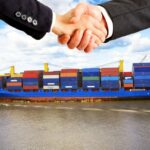


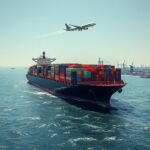
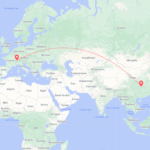
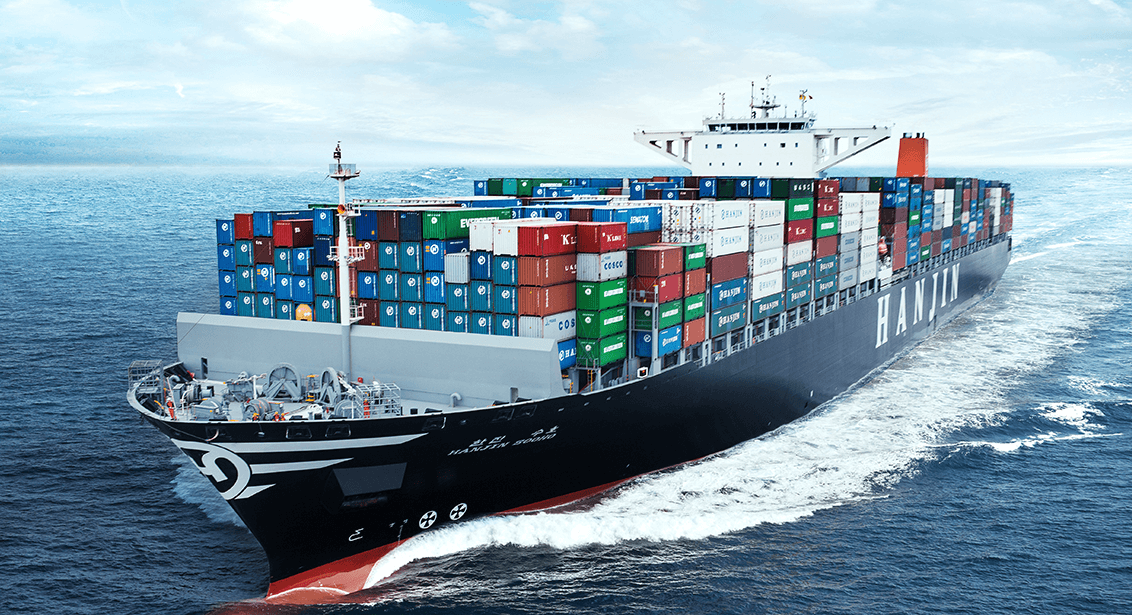
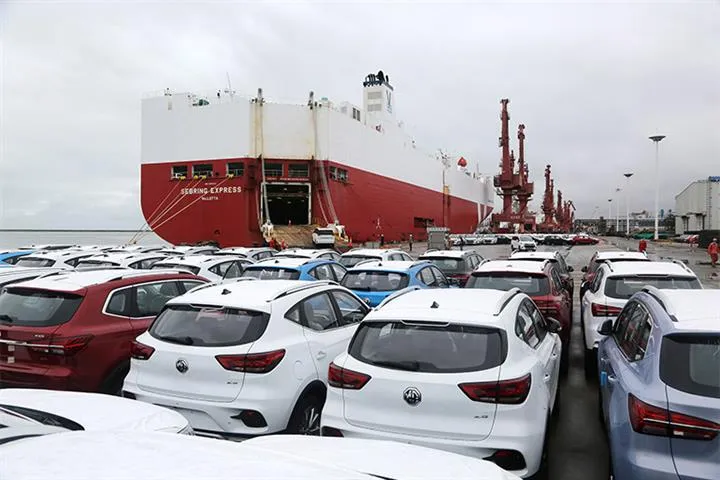

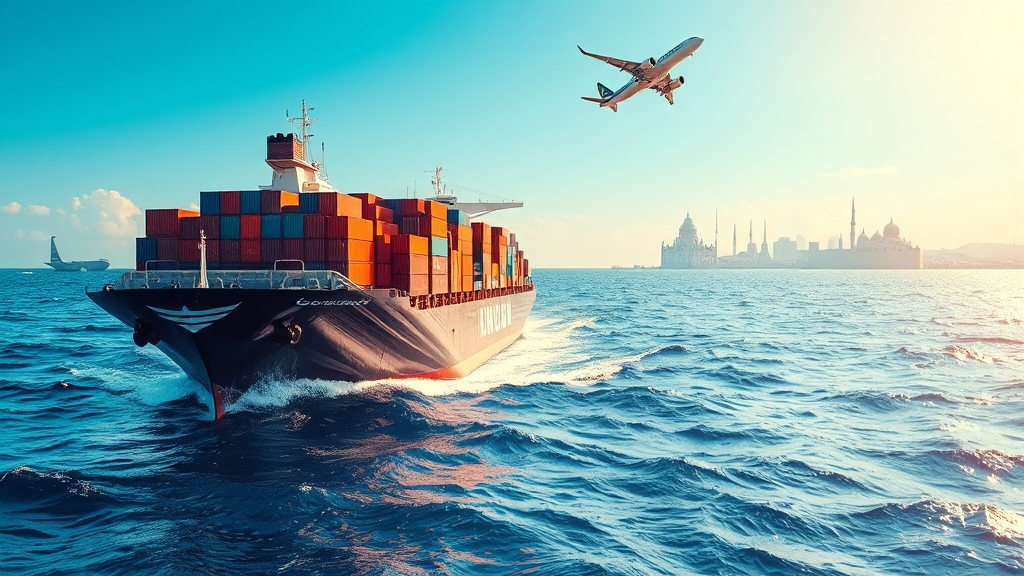
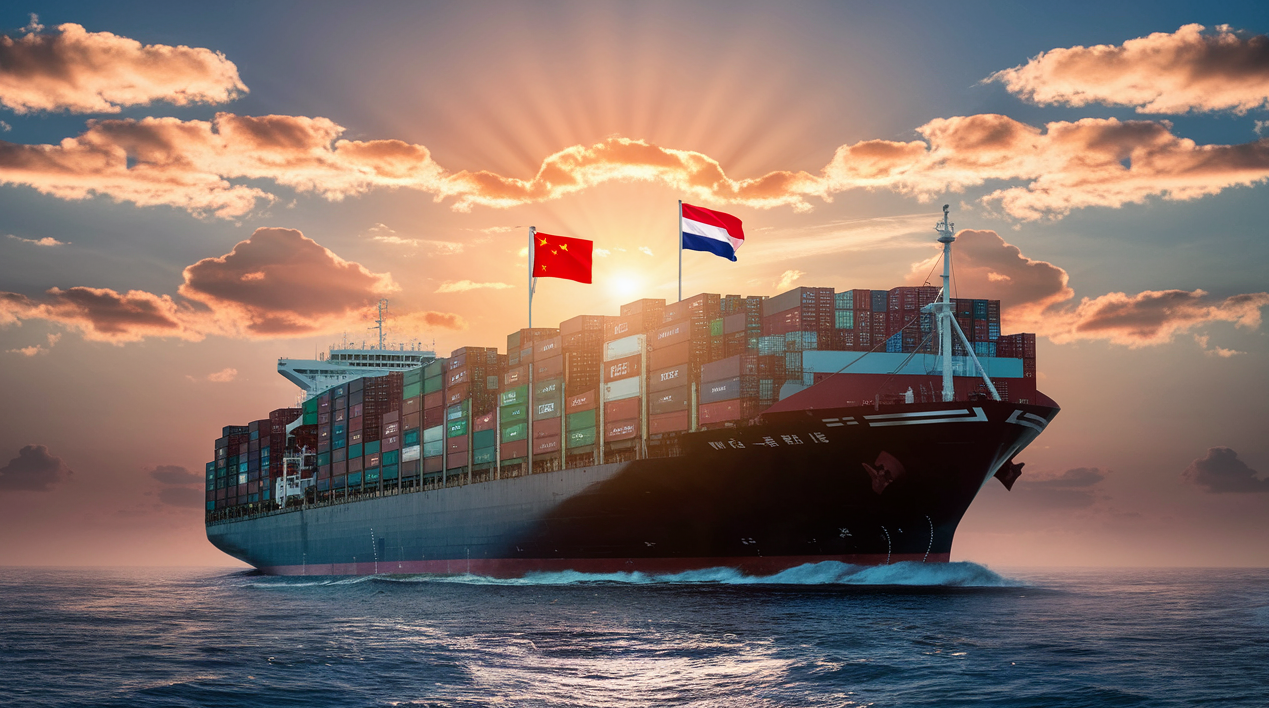





 Afrikaans
Afrikaans Shqip
Shqip አማርኛ
አማርኛ العربية
العربية Հայերեն
Հայերեն Azərbaycan dili
Azərbaycan dili Euskara
Euskara Беларуская мова
Беларуская мова বাংলা
বাংলা Bosanski
Bosanski Български
Български Català
Català Cebuano
Cebuano Chichewa
Chichewa 简体中文
简体中文 繁體中文
繁體中文 Corsu
Corsu Hrvatski
Hrvatski Čeština
Čeština Dansk
Dansk Nederlands
Nederlands English
English Esperanto
Esperanto Eesti
Eesti Filipino
Filipino Suomi
Suomi Français
Français Galego
Galego ქართული
ქართული Deutsch
Deutsch Ελληνικά
Ελληνικά Kreyol ayisyen
Kreyol ayisyen Harshen Hausa
Harshen Hausa Ōlelo Hawaiʻi
Ōlelo Hawaiʻi עִבְרִית
עִבְרִית हिन्दी
हिन्दी Hmong
Hmong Magyar
Magyar Íslenska
Íslenska Igbo
Igbo Bahasa Indonesia
Bahasa Indonesia Gaeilge
Gaeilge Italiano
Italiano 日本語
日本語 Basa Jawa
Basa Jawa ಕನ್ನಡ
ಕನ್ನಡ Қазақ тілі
Қазақ тілі ភាសាខ្មែរ
ភាសាខ្មែរ 한국어
한국어 كوردی
كوردی Кыргызча
Кыргызча ພາສາລາວ
ພາສາລາວ Latin
Latin Latviešu valoda
Latviešu valoda Lietuvių kalba
Lietuvių kalba Lëtzebuergesch
Lëtzebuergesch Македонски јазик
Македонски јазик Malagasy
Malagasy Bahasa Melayu
Bahasa Melayu മലയാളം
മലയാളം Maltese
Maltese Te Reo Māori
Te Reo Māori मराठी
मराठी Монгол
Монгол ဗမာစာ
ဗမာစာ नेपाली
नेपाली Norsk bokmål
Norsk bokmål پښتو
پښتو فارسی
فارسی Polski
Polski Português
Português ਪੰਜਾਬੀ
ਪੰਜਾਬੀ Română
Română Русский
Русский Samoan
Samoan Gàidhlig
Gàidhlig Српски језик
Српски језик Sesotho
Sesotho Shona
Shona سنڌي
سنڌي සිංහල
සිංහල Slovenčina
Slovenčina Slovenščina
Slovenščina Afsoomaali
Afsoomaali Español
Español Basa Sunda
Basa Sunda Kiswahili
Kiswahili Svenska
Svenska Тоҷикӣ
Тоҷикӣ தமிழ்
தமிழ் తెలుగు
తెలుగు ไทย
ไทย Türkçe
Türkçe Українська
Українська اردو
اردو O‘zbekcha
O‘zbekcha Tiếng Việt
Tiếng Việt Cymraeg
Cymraeg יידיש
יידיש Yorùbá
Yorùbá Zulu
Zulu